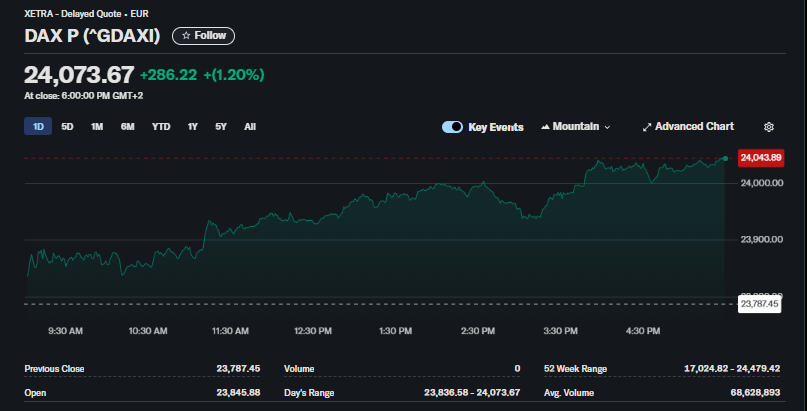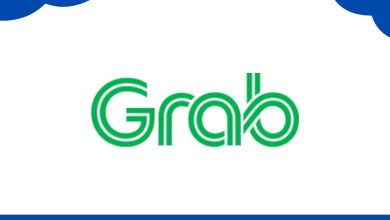German Stock Market Rallies as DAX Index Surges Past 24,000

At the close of trading, the DAX finished at 24,073.67, marking a substantial gain of 286.22 points, or 1.20%. The index displayed remarkable strength, closing at the absolute high of the day, a powerful signal of bullish conviction among investors.

The intraday chart shows the DAX opening higher and maintaining a steady upward trajectory for the entire session. After a brief period of consolidation in the early afternoon, the index accelerated its gains into the close, breaking through the key psychological level of 24,000 with momentum.
Key Market Levels from the Chart:
-
Previous Close: 23,787.45
-
Day’s Range: 23,836.58 – 24,073.67
-
52-Week Range: 17,024.82 – 24,479.42
The strong close places the DAX near the upper end of its 52-week range, indicating that the German market is in a sustained uptrend.
Market Outlook: What Does This Performance Indicate?
The robust performance of a major European index like the DAX provides insight into investor sentiment regarding the continent’s economic health. This analysis is for informational purposes and should not be considered investment advice.
The Bullish Perspective:
The primary bullish signal is the index closing at its session high. This often suggests that buying pressure remained strong right until the bell, which can indicate positive momentum carrying into the next trading day. The consistent upward trend throughout the session, with only minor pullbacks, demonstrates confident buying activity.
The Cautious Perspective:
While the momentum is clearly positive, investors should note that the index is approaching its 52-week high of 24,479.42. This level could act as a point of resistance where some profit-taking may occur. The market’s ability to decisively break through this previous peak will be a key test for the continuation of the rally.
Our Opinion
The German DAX showed impressive strength, driven by sustained buying interest that lasted the entire day. The finish at the session’s peak is a technically strong sign, suggesting that bullish sentiment is currently dominant. This move reflects confidence in Germany’s blue-chip companies and the broader European economic outlook.
Investors will now be watching to see if the DAX can challenge and surpass its 52-week high. The current momentum is favorable, but as with any market, it remains subject to macroeconomic news and global sentiment shifts.
Frequently Asked Questions (FAQ) about the DAX Index
1. What is the DAX index (^GDAXI)?
The DAX (Deutscher Aktienindex) is a blue-chip stock market index consisting of the 40 major German companies trading on the Frankfurt Stock Exchange. It is the leading benchmark for the German stock market.
2. What does today’s strong close mean?
When an index or stock closes at or very near its high for the day, it is generally considered a bullish sign. It indicates that buyers were in control up to the very end of the trading session, which can suggest positive momentum may continue.
3. Why might the German stock market have rallied today?
While the chart doesn’t specify a reason, such broad market rallies are typically driven by positive factors like strong economic data (e.g., better-than-expected GDP or inflation reports), positive corporate earnings from major companies, dovish comments from the European Central Bank (ECB), or positive global market sentiment.
4. How can someone invest in the DAX index?
You cannot buy an index directly. However, investors can gain exposure to the performance of the DAX by purchasing an Exchange-Traded Fund (ETF) that tracks the index. There are several DAX ETFs available to global investors.
5. What is the significance of the DAX trading near its 52-week high?
Trading near a 52-week high indicates strong positive performance and investor confidence over the past year. It signifies a robust uptrend, although it can also signal that the market may be approaching a resistance level where some investors might choose to sell and take profits.

